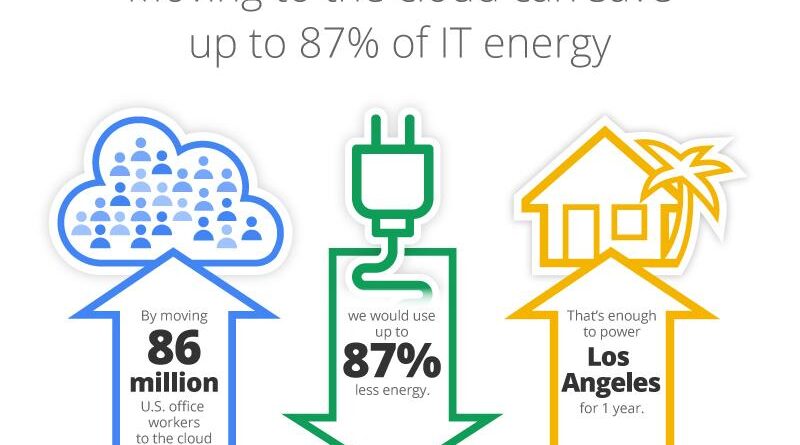Moving To The Cloud Could Save 23 Billion Kilowatt-hours Of Electricity

Sign up for daily news updates from CleanTechnica on email. Or follow us on Google News!
A study conducted by Lawrence Berkeley National Laboratory and Northwestern University and funded by Google has found that moving common software applications used by US workers to the cloud could save 23 billion kilowatt-hours of electricity, approximately enough energy to power all the homes, businesses, and industry of Los Angeles for a whole year.
The report (PDF) identified three common businesses applications which could be moved to the cloud: email, customer relationship management (CRM) software, and productivity suites.
“We can’t fly by the seat of our pants when it comes to assessing sustainability. We need numbers – hard data — to properly analyze how cloud computing compares to how computing is done now,” said Northwestern’s Eric Masanet, lead author of the report. “Well-thought-out analysis is especially important with new technology, which can have unforeseen effects. Our public model allows us to look forward and make informed decisions. What we found overall is that by hosting services on the cloud as opposed to locally, the savings are pretty robust.”
“These results indicate that the Internet offers huge potential for energy savings,” said Michael Terrell, Senior Policy Counsel, Energy & Sustainability on the official Google blog. “We’re especially excited that Berkeley Lab has made its model publicly available so other researchers and experts can plug in their own assumptions and help refine and improve the results.”
The study’s results were based upon a model which has now been released to the public, and took into account all of the factors that both Google and the study’s authors believe are necessary for a comprehensive assessment of the environmental benefits found in shifting from local and physical storage to cloud storage; including data centers, transmission systems, client devices, and transportation systems.
By minimising the need for individual storage systems located at each premises by transferring the lion’s share of data storage to the cloud, businesses and other institutions will not need as much electricity to power their own storage systems housing communal programs.
“The model, which will be available to a wide audience, allows you to evaluate energy use of various options in a significant way,” said Lavanya Ramakrishnan, a research scientist in the Computational Research Division at Berkeley. “By studying the present day and cloud scenarios, you can see the net energy and carbon-footprint benefits at a range of scales.”
“This powerful, public use model is really a foundational tool for the energy analysis community,” said Arman Shehabi, a principal scientific engineering associate in the Environmental Energy Technologies Division at Berkeley Lab. “The analytical structure and various assumptions are fully transparent, so users can explore the model’s underlying analytics, compare different scenarios, poke at the data and discuss the results with the community.”
The implications of this study will no doubt be found sweeping through industry over the next decade, as IT managers and financial officers determine the most environmentally and economically efficient means by which to do business.

Chip in a few dollars a month to help support independent cleantech coverage that helps to accelerate the cleantech revolution!
Have a tip for CleanTechnica? Want to advertise? Want to suggest a guest for our CleanTech Talk podcast? Contact us here.
Sign up for our daily newsletter for 15 new cleantech stories a day. Or sign up for our weekly one if daily is too frequent.
CleanTechnica uses affiliate links. See our policy here.
CleanTechnica's Comment Policy



